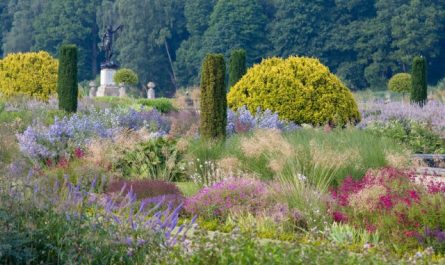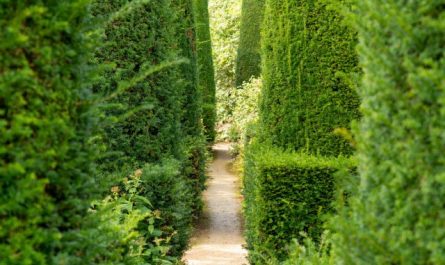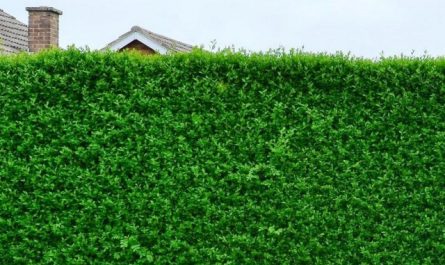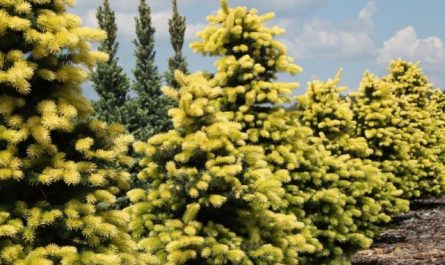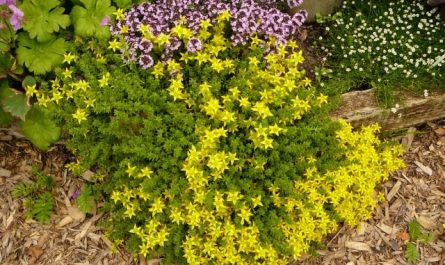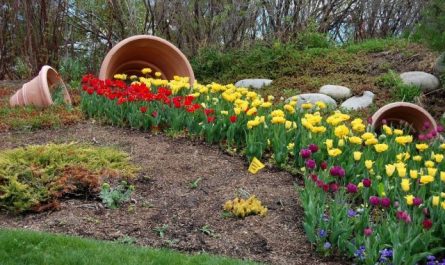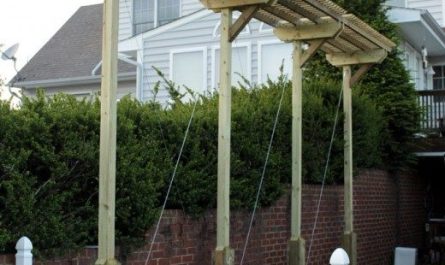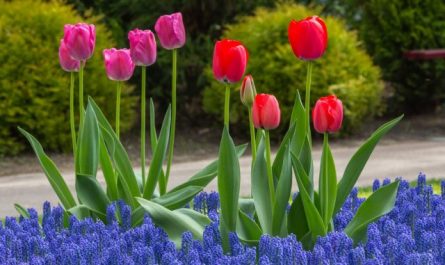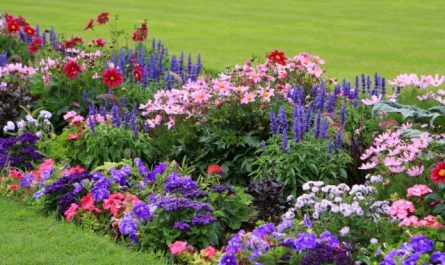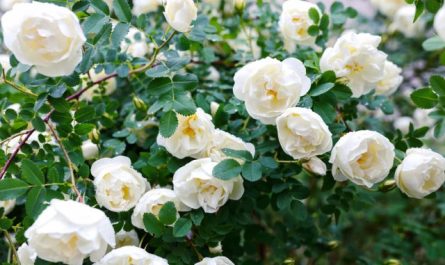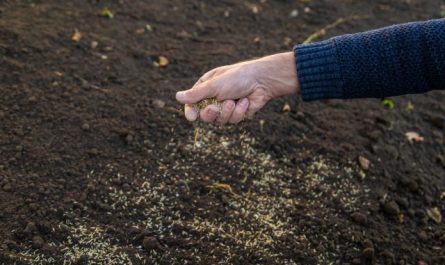The charming plant with fluffy leaves, which will be discussed in this article, is known to many under the name “sheep’s ears”. However, the genus Stachys is not limited to this original representative; within it there are no less decorative and equally unpretentious perennial plants. I would like to tell the readers of “Botanichka” in more detail about Stachys and its species, care features and use in landscape design. Believe me, this plant is worth your attention!

Stachys – botanical information
Race chistets (Stachys) belongs to family Lamiaceae and includes annual, perennial plants and shrubs, the stems of which vary in height from 30 to 300 cm. The leaves are entire, oppositely arranged, usually triangular in shape, from 1 to 14 cm long, with serrated edges, in most species – softly pubescent.
Stachys flowers, from 0,5 to 2 cm in size, are located in groups in the leaf axils on the upper part of the stem. The corolla is two-lipped, five-lobed, with the upper lip forming a “hood”. The color of the petals varies from white to pink, purple and red, and pale yellow flowers are occasionally found. Flowering time is from June to September.
The range of the genus Stachys is extremely wide and covers Europe, Asia, Africa, Australia and North America, frost resistance zones from 4th to 8th. Common names for Stachys are very diverse: sheep’s ears, hare’s ears, toadstool, snakeweed, snake grass, hoof, wild nettle and others. The official name – Stachys – the plant received in 1753 from Carl Linnaeus. This name is derived from the Greek word σταχυς (Stachia), which is translated as “spike”, and is explained by the fact that the inflorescences of Stachys are most often spike-shaped.
Interestingly, some species of stachys eat the larvae of several species of butterflies, and carpenter bees scrape hairs from the leaves of plants to use in building their nests.

Stachys – types and varieties
Estimates of the total number of species within the genus Stachys vary from 300 to 450 species, but only a few of these are of ornamental value to the garden.
Important! Recently, some plants from the genus Stachys have been classified by botanists as genus Bukvitsa (Concrete). In particular, the plant formerly known as Stachys variegata (Stachys macrantha), now bears the name Betony grandiflora (Betonica macrantha). And the name Stachys officinalis (Stachys officinalis) changed to Betony officinalis (Betonica officinalis). Therefore, you can see these two plants on sale under different names.
The most common species of stachys and betony in ornamental floriculture are the following.
Stachys lanata, or Byzantine Stachys
Stachys lanata, or Byzantine Stachys (Stachys wool, Byzantine) is the most common groundcover plant with grayish-bluish, heavily pubescent “woolly” leaves that are incredibly soft to the touch (“sheep’s” or “hare’s ears”).
The most common species in gardens is Stachys byzantium, which is distinguished by narrower and strongly drooping leaves. Varietal cultivars, for example, Fuzzy Wuzzy, Big Ears, have wider and slightly less drooping leaves, and the plants form denser clumps. But some varieties, on the contrary, emphasize fluffiness. For example, the Silver Carpet variety is distinguished by more silvery leaves due to strong pubescence.
Since, first of all, when growing this type of stachys it is used as an ornamental foliage plant, varietal specimens practically do not bloom. Species stachys bloom quite often, it has very small purple flowers collected in spike-shaped inflorescences. In natural flower beds, leaving such glaucous spikelets is quite appropriate. But in gardening literature, it is often recommended to cut them off, since they do not have much decorative value, and flowering bushes can lose their shape.
Stachys lanata is highly valued as a groundcover plant, which quickly forms a glaucous carpet over the soil surface and requires minimal care. Stachys lanata’s foliage is evergreen, but after winter its leaves often dry out and need to be raked out as soon as possible to avoid damaging the young growing foliage. In summer, for greater decorativeness, stachys plantings can also be cleared of individual dried leaves.


Stachys monnieri
Stachys monnieri (Stachys Monieri), unlike the woolly stachys, is valued for its attractive flowering and is a beautifully flowering perennial. The growing popularity of this flower, which was little known until recently, is primarily associated with the fashion for meadow flower beds of the “New Wave” of Piet Oudolf.
The most popular variety of Stachys monnieri is called “Humelo”, and this is the name of the place in the Netherlands where this famous designer has a personal garden. Piet Oudolf included this flower in the list of his favorite perennials for mixed borders, and thanks to him, gardeners all over the world also saw a special modest beauty in this plant.
Stachys monnieri forms textured dense rosettes of dark green leaves with a wavy edge, so the perennial can also be used as a nice ground cover plant (bush diameter up to 40 cm). Stachys monnieri reaches its maximum decorativeness during flowering, when relatively tall peduncles from 40 to 60 centimeters high begin to rise above the foliage.
Stachys blooms very abundantly with spike-shaped inflorescences consisting of many small (0,5 mm) two-lipped flowers of pinkish-purple color. The flowering period lasts for quite a long time – from mid to late summer. From a distance, this flower can be confused with sage oak, but it differs from it, first of all, in the shape of the foliage.
By the way, such similarity makes both plants wonderful partners in a flower garden. In a warm climate, the foliage of Stachys monnieri can remain green in winter, but in the middle zone it dies almost completely, but grows very quickly in the spring. The plant is completely winter-hardy in zone 4.


Large-flowered letter
Large-flowered letter (Betony grandiflora, or Betonica macrantha) was previously called Stachys grandiflora (Stachys grandiflora). In the wild, betony is widely distributed in the mountain meadows of the North Caucasus in our country. In culture, there are garden forms of betony, which are distinguished by denser inflorescences, and can also have white flowers.
The most common variety of Betony grandiflora is “Superba” (superba). This plant really does look like a larger version of the Monnieri betony. The betony is a fluffy bush with slightly wrinkled dark green foliage with a wavy edge. In shape, they are very similar to the leaves of the betony, but are much larger (up to 15 cm), wider and can resemble a heart.
The flower stalks rise above the foliage to a height of 50 cm. The flowers are also very reminiscent of Stachys Monnieri in color and shape, they are two-lipped and pink-purple, but much larger – up to 1,5 cm. Such flowers are collected in loose capitate inflorescences, where the flowers are located in whorls. Betony large-flowered blooms earlier than Stachys – from late spring to mid-summer for several weeks, so it can serve as an excellent addition to Stachys, which will take over the flowering baton from it.

Growing conditions for stachys and betony
Stachys are generally very easy to care for plants, requiring minimal care and are hardy enough to cope with a variety of growing conditions. They dislike wet soils and damp weather the most, although woolly stachys is considered more resistant to winter overwatering.
While wild forest species prefer to grow in the shade, garden cultivars love good light, so they are best grown in full sun or light partial shade. Too much shading can contribute to the collapse of clumps and the emergence of diseases.
Stachys grows well in moderately fertile, medium-moist, well-drained soils. The plant tolerates drought well, especially the woolly variety, but still, if there is a long absence of precipitation, it needs to be watered abundantly. In this case, if possible, water under the root, avoiding moisture getting on the leaves to avoid the development of fungal diseases. Additional feeding of stachys is usually not required, but it can be fed once a season at the beginning of growth with complete mineral fertilizer.
As a rule, Stachys monnieri does not have any serious problems with insect pests and diseases in the middle zone. But in a hot and humid summer climate, plants may develop fungal and bacterial lesions in the form of spots on the leaves, powdery mildew and various rots. In this case, most often the lesions are minor and do not cause the death of the plants, only slightly reducing their decorativeness. Also, Stachys monnieri and Betony can be eaten by slugs and snails in a humid summer.
Stachys can grow in one place for a long time, but often over time it can become overgrown and “bald” in the middle of the clump, so it is recommended to dig it up and divide it after three to four years, this is especially true for Stachys lanata.
All types of stachys and betony are very easily propagated by dividing the bush in mid- or late summer, and the divisions take root well, even if they have a minimum of roots, if they are provided with regular watering.
You can also get planting material for stachys from seeds. To do this, sow the seeds for seedlings indoors at the end of winter and plant them in a permanent place in May. When sowing, the seeds are deepened into the substrate by 1 cm, you will have to wait for shoots for 2-3 weeks.

Stachys in landscape design
Abundant flowering and decorative foliage make these perennials ideal for planting in the front and middle parts of various flower beds. Stachys lanata is in high demand when it is necessary to turf a small area in a short time. In addition, it is an interesting edging plant.
Although beautifully flowering stachys is not known to many gardeners, it is a unique addition to any sunny flowerbed and is especially good in natural mixed borders. Flowering stachys suits almost any style and combines well with many garden plants – annuals, perennials and low conifers and deciduous shrubs. But, first of all, it is an excellent partner for echinacea, rudbeckia, gaillardia, geraniums, bells, delphiniums, various cereals. Stachys can also create interesting combinations with roses. To achieve the greatest decorative effect, it is better to plant stachys and betony in groups.

My experience of growing stachys and betony
Stachys monnieri, Stachys lanata and Betony grandiflora have been growing in my garden for many years now. Betony was once given to me as a tiny division of a plant that had once been brought from the wild nature of the North Caucasus. It had practically no roots, but it took root well and grew a fluffy bush. It is noteworthy that this betony blooms much earlier than the “cultivated” one – in early to mid-May, while Betony grandiflora “Superba” blooms in the beginning and sometimes in the middle of summer among gardeners I know. At the same time, the inflorescences of the species betony are not so dense and consist of fewer flowers.
My favorite plant is Stachys monnieri ‘Humelo’, growing in a ‘meadow mixborder’. This species combines very well with many plants of the natural type, and its duets with echinacea are simply impossible to take your eyes off. The combination of purple Stachys and white Gypsophila also looks very gentle.
My care for the stachys is limited to watering during dry periods. And the woolly stachys grows on its own “like a weed” in the front garden. One summer at the old dacha, the monnieri stachys lasted 1,5 months without watering, after which it began to wither, but after watering it fully recovered. Therefore, its drought resistance still has its limits. In rainy summers, the monnieri stachys sometimes suffers from spotting in small quantities, this does not harm the plant much, and I do not apply any treatments.
Dear Readers, Stachys has a delicate, touching beauty and is very easy to grow, so it deserves to be more widely distributed in gardens. Try planting Stachys!
